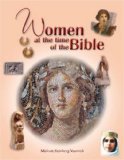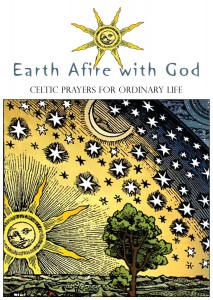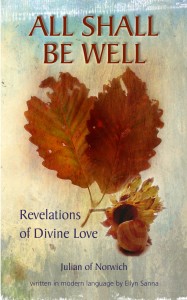 Touching God: Experiencing Metaphors for the Divine
Touching God: Experiencing Metaphors for the Divine
Ellyn Sanna
© 2002
Paperback, $12.95
Touching God is like sitting down with a really good friend who makes you look over the last few days or weeks of your life and see them in a different way. The two of you are talking about your mundane lives then she says something that makes you see a daily occurrence in a whole new light. Sanna makes you look at the things that make up your daily, routine life such has food, light, housekeeping, children, and friends and helps you see Godde. Taking everyday objects and activities and making them metaphors to describe Godde is nothing new–Jesus did the same thing in parables. Throughout the Bible daily activities are turned into metaphors to describe this invisible Godde we are in a relationship with. Things and activities we are familiar with give Godde the human skin we need to touch her and know she is with us. Metaphors like:
- Godde is light.
- Godde is a rock.
- Godde is bread.
- Godde is a housekeeper.
- Godde is a spouse.
- Godde is a friend.
Keeping each metaphor firmly rooted in her daily life and relationships, Sanna unpacks how we experience Godde through these symbols in the 21st century. She is good at taking the things of everyday life and giving Godde the flesh we all crave.
Being the descendent of Italian Americans who love to cook and eat, my favorite chapter was the one on food. The chapter begins with one of the most creative and imaginative retellings of the Feeding of the 5,000 I have read. Beyond the obvious connection with the sacrament of communion, Sanna reminds us that at the heart of seeing Godde as food is remembering the connection between food and our physical well-being. Food has become everything from an addiction to a reward in American society, and our obsession with food revolves around what we can’t have and shouldn’t have. We have forgotten that we need to food to live, just as we need Godde to live. Yes, human beings shall not live by bread alone, but we will not live at all without bread. Sanna believes we need to remember and think of our meals as blessings of abundance and generosity instead of calorie counting to help us remember the same abundance and generosity we receive from Godde.
After recently posting about the importance of homemakers in the Early Church, I was very pleased to see a chapter comparing Godde to a housewife in Touching God. Sanna begins with the parable in Luke 15 that normally gets looked over when we talk about Godde looking for lost things and lost people:
Or what woman having ten silver coins, if she loses one of them, does not light a lamp, sweep the house, and search carefully until she finds it? When she has found it, she calls together her friends and neighbours, saying, “Rejoice with me, for I have found the coin that I had lost.” Just so, I tell you, there is joy in the presence of the angels of God over one sinner who repents (Luke 15:8-10, NRSV).
Remembering lessons from Sunday School Sanna says:
I don’t remember a time I didn’t know that God was the Good Shepherd searching for the lost sheep, and my Sunday school teachers made quite clear that just as the father ran out to greet his prodigal son, God welcomes us when we come back to him. God is a shepherd, God is a father; I was familiar with these metaphors. But no Sunday school teacher ever spelled out the parallel metaphor that is clearly there in Christ’s story: God is a housewife.
I don’t remember hearing anything about Godde being a housewife in my years of Sunday school and church either. Though I have heard many sermons and Sunday School lessons about Godde the Shepherd, and Godde the Loving Father. Those three verses between these two parables are conveniently skipped over, so we don’t have to demean Godde by showing Godde doing something as menial as “woman’s work.” Although, as Sanna points out, in the biblical time being a homemaker/housekeeper was not considered demeaning labor. Women were responsible for the processing of and allotment of all the food the family needed. Women’s work also fueled the ancient economy with their continuous spinning and weaving of cloth for clothing, shelter, and housewares. And as I pointed out in my post about Martha, Sanna also explains that rich homemakers ran small businesses.
One of the things that I adore about this book and Sanna is her penchant for picking up the dictonary and looking up what words really mean. This is how I found out that menial did not always mean inferior or demeaning. Menial “comes from the Latin roots meaning ‘to remain, to dwell.’ This sense of stability and permanence surely means that our household chores reflect aspects of the divine nature, ‘with whom is no variableness, neither shadow of turning’ (Jas 1:17, KJV).”
The next time I am cleaning the bathroom or mopping the kitchen floor my mantra is going to be: “Godde is a housekeeper too. Godde is a housekeeper too.”
The most challenging chapter, and the one I resisted the most will probably be the one other readers will have trouble with as well: Seeing Godde in the poor. Sanna herself notes:
We are attracted to most symbols for God. Metaphors from nature may be intimidating at times, but they are still beautiful; in most human metaphors for God we catch a glimpse of something loveable and sympathetic, some human quality we recognize and appreciate. But the poor make us uneasy. People who lack food, proper hygiene, and education are seldom pretty; how can we see God’s image in such ugliness and despair?
Even though Jesus was born in poverty and was a poor man all his earthly life, we have problems with seeing Godde as poor, seeing Godde in poverty.
When we catch a glimpse of God in those who are poor, we are not meant to sit back and simply admire it. Other divine metaphors may speak to us through their essential beauty; we can meditate on these symbols’ attributes and learn more about the nature of God–but there is nothing divine at all about human suffering and need. The poor are not blessed because they possess some wonderful spiritual quality; instead, they are blessed because God hears their cry….They are a challenge to our smug self-sufficiency, a voice that demands our response.
The question is will see Godde in the poor and act? Or will we turn away to the more pleasant symbols for Godde and ignore that this was the life our own Savior chose while walking the earth?
I recommend this book to anyone who wants to recognize Godde’s presence in their ordinary, mundane lives. Godde is there, but we so often don’t take the time to look, search, and meditate on the many different ways Godde shows up in our day. Touching God will help you to slow down and start looking for the many metaphors and symbols in your own life that will help you see Godde all around you everyday.
I have also reviewed Ellyn Sanna’s new translation of Julian of Norwich’s Showings: All Shall Be Well: Divine Revelations of Love by Julian of Norwich.
Disclaimer: I received a free copy of this book from Anamchara Press agreeing to post a review of it on my blog.




 If Darwin Prayed: Prayers for Evolutionary Mystics
If Darwin Prayed: Prayers for Evolutionary Mystics
 Radical feminist theologian Mary Daly famously said that “If man is God then God is man.” What Daly said in her terse statement Matt Mikalatos illustrates in his first book,
Radical feminist theologian Mary Daly famously said that “If man is God then God is man.” What Daly said in her terse statement Matt Mikalatos illustrates in his first book, 